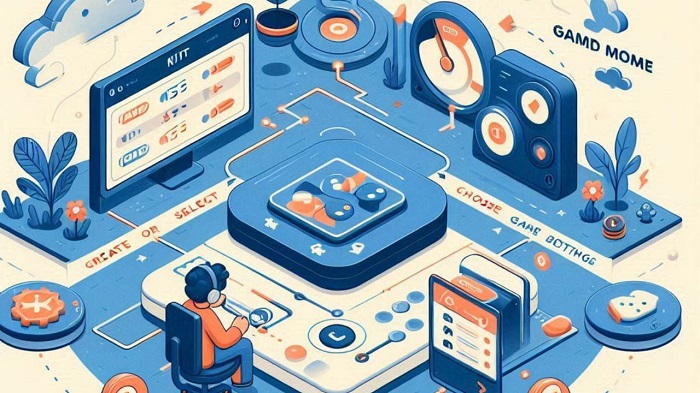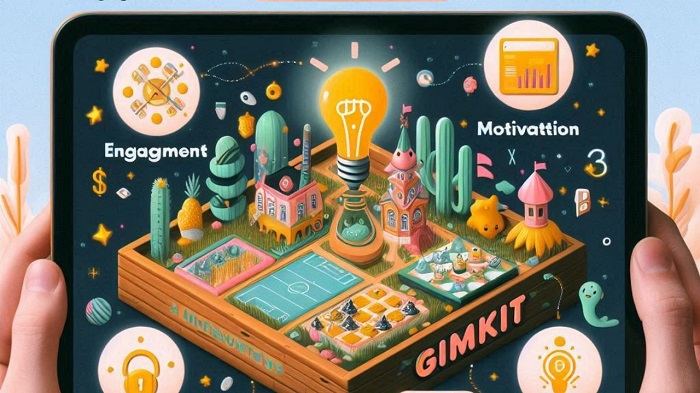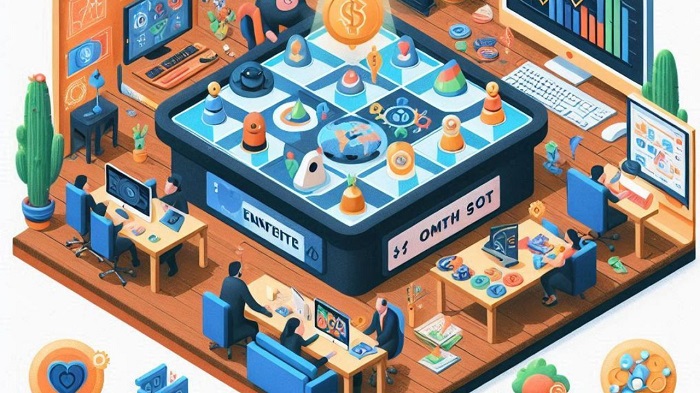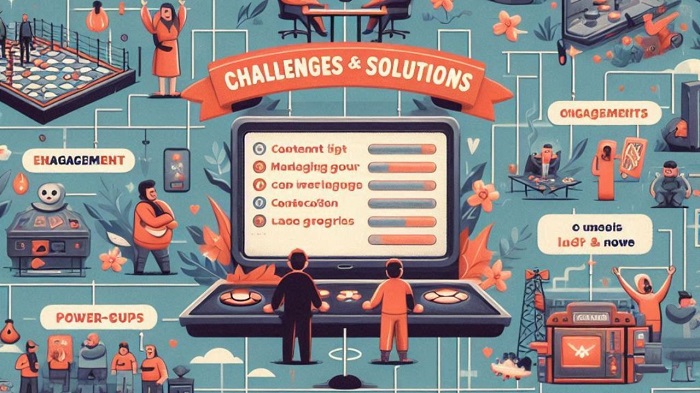Have you ever heard about “gamifying” your learning process? Yes, you are hearing it right. Gimkit has brought this opportunity to learn while playing various interesting games. The creators designed this fun app as an entertainment way for educators and students to have fun while being competitive and collaborative during lessons. Hosting a game on Gimkit is an exciting opportunity to create an engaging experience for your audience be it a classroom of students, colleagues at work or friends meeting over a social gathering. If you don’t have any idea what Gimkit is and how it works, it is high time you learned. It will change your learning experience and you will start having fun while learning. This article will help you learn how to host a Gimkit game, its advantages and other important aspects so that you can become a pro Gimkit host in no time.
Overview of Gimkit

Gimkit is an online learning platform where participants answer questions in order to gain virtual currency. The questions will come in the form of a quiz to make the process more interesting. The currency you will learn through giving the right answers can be spent on in-game upgrades, power-ups, or tools. This adds a layer of strategy to the overall learning experience. Players can join individually or as groups, and the host can select from several game modes. The host also can set subjects, skill levels, and other preferences for the game. The platform supports live gameplay and asynchronous assignments using different settings: in-class, remote, or hybrid. The host may act as a leader while playing the games with other participants.
How to Prepare for Being a Gimkit Host

Hosting a Gimkit game requires proper preparation. Here’s a step-by-step guide on how you can set up your very own Gimkit event
Step 1: Sign Up and Create or Select a Kit
A Kit in Gimkit is a collection of questions related to a specific topic. As the host, you can create your own kit. Here’s how to do it:
- Log in to your Gimkit account.
- Click “New Kit” and choose a subject area.
- Add questions manually or import them from a spreadsheet.
- Customize with multiple-choice or text input formats.
If you are lazy to create a kit for yourself or don’t have the time to do so you can choose a pre-made kit as per your liking. To select it you have to
- Navigate the public library of Kits created by others.
- Then search by subject, grade level, or topic to locate applicable content.
Step 2: Select a Game Mode
Gimkit provides a variety of game modes to meet the needs and engagement levels of the objective:
- Classic Mode: Players compete individually to earn the most virtual currency.
- Team Mode: Participants collaborate to achieve shared goals.
- Themed Modes: Seasonal and unique modes like “Humans vs. Zombies” or “Infinity Mode” add variety and excitement.
Each mode introduces unique mechanics, so choose one that aligns with your audience’s preferences and the session’s objectives.
Step 3: Adjust the Game Settings
Customize your game settings to optimize the experience:
- Set the game duration to your liking
- Decide if you want to shuffle the questions or turn on the power-ups
- Also, decide if players can buy upgrades during the game.
- Adjust privacy and access control
Step 4: Sharing the Game Code
After your game is ready and you have decided on the settings, Gimkit will provide a unique code. Share that code with other participants so they can join the session through the Gimkit website or app.
How to Host the Gimkit Game

When hosting, your responsibilities include enabling the game and ensuring all participants are engaged. Here’s how to go about it so seamlessly.
- Game Session Kick-off
- Start up the game session and ensure that your settings are confirmed.
- Keep an eye on the lobby as people join using the game code.
- Start the game when all the players are ready.
- Game Play Monitoring
- As a host, you have an overview of the game going on. From this view, you get to:
- Monitor individual and team performance.
- Note where questions are hard or soft for players
- Groom if players encounter technical problems.
- Engaging Participants
- In a game, you need to keep the participants engaged to bring out the fun element. Maintain the excitement with:
- Promoting light and friendly competition with updated leader boards.
- Award small prizes or incentives to the champions.
- Recognise achievements, such as reaching in-game milestones.
- End of the Game
- When the game ends
- Review the leader board with participants.
- Performance data could be used for feedback or additional learning.
- Save or export the results for reference.
Benefits of Hosting a Gimkit Game

Now that you have already learned about how to host a game on Gimkit, you should know what you should do that. To be more precise you need to know the advantages of hosting a Gimkit game. So, let’s get into that.
1. Engagement and Motivation
Gimkit’s gamified approach keeps participants engaged and eager to learn. The mix of competition and strategy fosters motivation, even for those who might not be as easy to motivate with traditional learning approaches.
2. Feature of Customization
This flexibility enables hosts to customize content based on their audience’s needs. Whether algebra, world history, or grammar, you can make Kits that best suit your objectives. You can learn everything here while playing interesting and fun games.
3. Real-Time Insights
As the game happens, hosts can see how the participants are performing in real time. This is super helpful for educators when looking to identify a place to give more attention or where students thrive.
4. Flexibility to Use Anywhere
Gimkit is accessible, hence suitable for classrooms, corporate training, and even casual events. Participants can join from any device that has an internet connection.
Some Tricks for a Great Hosting Experience

Hosting a Gimkit game is exciting and fun. But do you know that you can make it more enjoyable by adding some little spices? Let’s get to know how.
1. Know Your Audience
Tailor the game’s content and mode to the group. Younger participants are likely to prefer easier questions and more entertaining modes, while older audiences tend to prefer challenging content. Create quizzes or questions considering all these factors.
2. Balance Competition and Fun
Competition is a key function of Gimkit, but this process ensures the leanness remains upon learning and enjoyment. Too much competitiveness often affects the fun of the game in the wrong way. Make sure that does not happen to your game. Encourage a positive atmosphere and eliminate aggressive rivalries.
3. Strategic Elements
Teach participants how to use in-game currency wisely by purchasing upgrades that align with their strengths. This adds depth to the gameplay and makes the game more interesting. It is more fun when the levels are harder as you go up.
4. Utilize Themes and Visuals
Enhance the experience by incorporating themed Kits or game modes that resonate with the group, such as holiday-themed games or subjects of shared interest. This can help the participants to bond with each other and create a close-knit group.
5. Offer Feedback
After the game, review the results and provide constructive feedback. Highlight areas of improvement and celebrate successes to reinforce learning. As a leader, you are responsible for the learning of the participants. Make sure each one is learning while having fun at the games.
Common Challenges for Gimkit Hosts and their Solutions

Hosting a Gimkit game in general is a painless and enjoyable process, but just as with any platform, it is not without its unique challenges. Here are some of the most common issues that the hosts of Gimkit often encounter and effective ways to overcome them.
1. Connectivity Issues
Connectivity difficulties, especially in remote or hybrid settings, can cause lag, drops, or inability to enter the game whenever they like.
Possible Solutions
- Stable Internet Connection: This requires an effective internet connection for both the host and participants. Before an in-person session, find out the Wi-Fi strength of the venue.
- Backup Plan: Share the game code or link in multiple formats (email, chat, or slides) so that participants know exactly where to go in case of connection issues.
- Set Expectations: Tell players to arrive a few minutes ahead of time to work out any problems.
- Support Devices: Recommend that players use newer browsers or the Gimkit app for improved functionality.
2. Technical Malfunction
Glitches or server downtime can sometimes prevent the game from running smoothly, both for the host and players.
Possible Solutions
- Reload Game: If anything goes wrong, reload in the browser or restart the game session.
- Check Updates: Update Gimkit to its latest version, as this often rectifies known problems.
- Plan B: Prepare a backup activity like a discussion or quiz for future use, in case the platform appears to go down temporarily.
- Contact Support: Use Gimkit’s help desk or community forums to get quick support in resolving technical issues.
3. Lack of Engagement
Participants may lose interest if the game is repetitive, and the questions are similar. Players may think the questions are too easy or too hard and lose interest in playing.
Possible Solutions
- Select the Right Mode: Experiment with different game modes to keep things fresh and exciting. Try out the modes that the participants find interesting.
- Manage Question Difficulty: Try to balance the questions to the skill level of your audience. Ensure there is a balance of easy, moderate, and challenging items.
- Encourage Friendly Competition: Use leader boards and rewards to motivate participants.
- Engage During Gameplay: Actively comment on progress, cheer players on, and highlight exciting moments to maintain energy levels.
4. Generic Content
Kits that are too vague and do not align with the participants’ interests or learning goals may dim the excitement of the game.
Possible Solutions
- Customize Kits: Create or adjust Kits according to your target audience. Add or remove topics to suit their needs.
- Ask for feedback: After each session, ask for participants’ input on content and gameplay so that improvements can be made for future sessions.
- Use Themes: Incorporate seasonal or pop-culture themes to make Kits more relatable and enjoyable.
5. Difficulty in Managing Large Groups
Hosting a Gimkit game for a large group can often be overwhelming. There are certain challenges such as ensuring everyone joins the game, monitoring progress, and maintaining order.
Possible Solutions
- Team Mode: Divide participants into teams to simplify gameplay and strengthen collaboration.
- Lobby View: Observe participants who have entered the game through the lobby before the game begins.
- Helper Hosts: Ask to have an assistant host to be the moderator of participants and help troubleshoot any possible problems during the event.
- Define the Game Rules: Set boundaries on what is expected of players beforehand to avoid anarchy.
6. Power-ups Overuse and Upgrades
In some games with the option of shopping for power-ups, participants might over-rely on them, creating an imbalance or undermining the learning experience.
Possible Solutions
- Modify Game Rules: Restrict or disable some power-ups from the start if they affect the process of learning.
- Teach Strategy: Train participants on how to spend their in-game money wisely instead of splurging on upgrades.
- Gameplay Monitoring: Monitor how the players utilize upgrades and intervene to make sure everything is fair.
7. Privacy and Security Issues
At times, conducting games for a big audience, especially in an online environment might be a challenge to securing access and privacy.
Possible Solutions
- Control Access: Utilize game codes for access to only invited participants only
- Track Participants: Recognize unusual usernames and track their behaviour. Eliminate problematic players
- Don’t ask sensitive questions: Prevent asking questions with private or sensitive material about the participant.
Frequently Asked Questions (FAQs)
Do I need a subscription to host a Gimkit game?
You can try the free version if you want. However, if you want to use all the features, and modes and get unlimited kits, you need to subscribe to the paid version.
How many players can join a Gimkit game?
It depends on the plan you are using. Gimkit has the ability to host 100 players at a time.










Leave a Reply